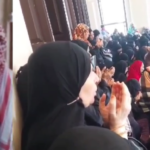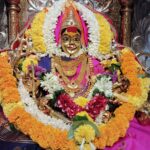Anupama Nair
There was then a twist in the story. In 1580, Spain conquered Portugal and it opened the doors of the country to other European powers like the Dutch and the British. The Dutch arrived first, and later the British. The merchants of the East India Company arrived in Bombay in November 1583 and toured through Bassein, Thane, and Chaul. The Battle of Swally was fought between the British and the Portuguese in Surat in 1612 for the possession of Bombay. Castella de Aguada or the Fort of the Waterpoint was built by the Portuguese at Bandra in 1640, as a watchtower dominating the Mahim Bay, the Arabian Sea, and the southern island of Mahim.
Then Portuguese King John IV gave Bombay as a dowry for the marriage treaty of Charles II of England and Catherine of Portugal on 8 May 1661. The British Crown sold Bombay to the East India Company in 1668 for a mere sum of ten pounds or Rs. 1,48,000 today.
In the beginning, the British had less interest in Bombay compared to Calcutta or Madras as it was not a great asset to the company, but only helped it to keep a foothold on the west coast. At the time the Mughals and Marathas under Chhatrapati Shivaji were more powerful. Even the famed British naval power was no match for the Mughals, Marathas, Portuguese, and Dutch, all of whom had interests in the region. The British later established their stronghold and fortified the city naming Fort St George in 1769.
After the Revolt of 1857, like the rest of the country, Bombay also came under the rule of the British Crown. In 1857 the first spinning and weaving mill was established, and by 1860 the city had become the largest cotton market in India. The American Civil War (1861–65) which resulted in the cutoff of cotton supplies to Britain caused a trade boom in Bombay. However, with the end of the Civil War, cotton prices crashed, and the bubble burst. However, by that time, the hinterland was opened, and Bombay had become a strong center of import trade. The opening of the Suez Canal, greatly facilitated trade with Britain and continental Europe which also contributed to Bombay’s prosperity.
As the population increased, unkempt, overcrowded, and unsanitary conditions became more widespread. There was a Plague Pandemic in 1896. The City Improvement Trust was established to open new localities for settlement and to erect dwellings for the artisan class. An ambitious scheme for the construction of a seawall in Back Bay to reclaim an area of 1,300 acres was proposed in 1918, but could not be finished till the completion of Netaji Subhas Chandra Bose Road from Nariman Point to Malabar Point, which was the first two-way highway of its kind in India. It was built after the World War II. In the postwar years the development of residential quarters in suburban areas begun, and the administration of Bombay city came under the Municipal Corporation and was extended to the suburbs of Greater Bombay.
Under the British, the city had served as the capital of Bombay Presidency and during the late 19th and early 20th Centuries it was a center of both Indian Nationalist movement. The first session of the Indian National Congress was held in the city in 1885. In 1942 Session of the Congress, the Party passed the “Quit India” resolution, which demanded complete independence for India. Finally, after 190 years, we did see the ‘dawn of freedom’.
At the time of the Partition of India on 15 August 1947, around 100,000 Sindhi refugees from Pakistan were relocated to the military camps near Kalyan. It was converted into a township in 1949 and named Ulhasnagar by the then Governor-General of India, C. Rajagopalachari. The Greater Bombay District came into existence in 1950, with the merger of Bombay Suburbs and Bombay City. The limits of the Municipal Corporation were extended up to Jogeshwari along the Western Railway and Bhandup along the Central Railway. The limit was further extended in 1957 up to Dahisar along the Western Railway and Mulund on the Central Railway. In 1955 the Bombay State was being re-organized along linguistic lines into the two states of Maharashtra and Gujarat
In 1960, Bombay became the new capital of Maharashtra. “Sky-scrapers, towering architecture, the Bombay Stock Exchange, tarred roads and a boom in the secondary and tertiary sector changed the city's status and brought it up to one of the top four cities in the country”. Today, Mumbai is the fourth most populous city in the world after Tokyo, Delhi, and Sao Paulo.
Mumbai is now the business capital of India and is also one of the largest cities in the country. The present population of Mumbai is estimated to be millions and is still growing each day. Not much is known, however, how the population grew or how the city got its status as the commercial capital of India. The insight into the history of this glorious city is the answer to its inspiriting beginnings and eminence around the world.
It has the highest number of millionaires and billionaires among all cities in India. Mumbai is home to three UNESCO World Heritage Sites like the Elephanta Caves, Chhatrapati Shivaji Maharaj Terminus, and the city’s distinctive ensemble of Victorian Art Deco buildings, and many more.
Mumbai is famous for its Gateway of India, which is an arch-monument built in the early 20th Century. It was erected to commemorate the landing of Emperor George V and Empress Mary, who were the first British monarch to visit India. At the time of the royal visit, the gateway was not yet built, and a cardboard structure greeted the monarch. The foundation stone was laid in March 1913 for a monument built in the Indo-Saracenic style, incorporating elements of 16th-century Gujarati architecture. The final design of the monument was built by architect George Wittet sanctioned in 1914, and was completed in 1924.
What a proud history, my city has and now I have become a proud Mumbaikar. I love you Mumbai!

































Is it an error. First I saw 3 parts of the story. Now I can see only last part. Is this system error. Without first two parts it is abrupt
The first two parts were stories we Mumbaikars never knew. I told my friends to read it and it was not there anymore so please rectify the error.
Is it an error. First I saw 3 parts of the story. Now I can see only last part. Is this system error. Without first two parts it is abrupt
The first two parts were stories we Mumbaikars never knew. I told my friends to read it and it was not there anymore so please rectify the error.
What is wrong. I first saw 3 parts, now only part 3 is seen. Is this a system error. It does not look good. Please correct